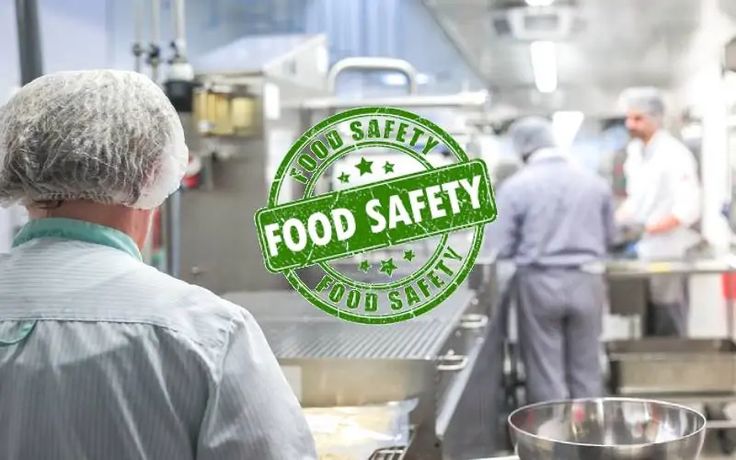Food safety extends beyond just preventing illness. In an age where consumers are increasingly aware of what goes into their meals, the presentation becomes a pivotal element that reflects quality and care in food preparation.
Overview
Food safety and presentation are critical components that can significantly influence consumer perception and health outcomes. Ensuring that food is not only safe to eat but also visually appealing plays a vital role in dining experiences. From the farm to the table, maintaining careful sanitation standards and proper food handling techniques is essential in preventing contamination.

Food Handling
Food handling is a critical aspect of both food safety and presentation that often gets overshadowed by culinary creativity. It begins long before ingredients hit the pan, proper storage, preparation, and serving techniques are essential to maintaining not only the taste but also the integrity of your dishes. A surprising fact few consider is that cross-contamination can occur even in apparently harmless situations.
Hygiene
Hygiene plays a crucial role in safety and presentation. By prioritizing hygiene not only for safety but also for aesthetic appeal, chefs and home cooks alike create an atmosphere where culinary ability continues to increase. Ultimately, embracing careful hygiene standards is not just a matter of compliance but an opportunity to enhance both flavor and visual delight on our plates.
Food Styling & Plating
Styling and plating is an art form that transcends mere aesthetics, it’s about creating an experience that tantalizes not just the taste buds but all the senses. Lush, vibrant garnishes can elevate a dish visually, effective presentation goes beyond superficial beauty. Intact serving vessels ensure that your culinary creations remain uncontaminated while also providing a canvas for artistic expression.

Food Allergies & Intolernces
It is an art form that transcends mere aesthetics, it’s about creating an experience that tantalizes not just the taste buds but all the senses. Effective meal presentation goes beyond superficial beauty it plays a crucial role in safety. Using clean, intact serving vessels ensures that your culinary creations remain uncontaminated while also providing a canvas for artistic expression.
Labeling And Packaging
Labeling and packaging play roles in food that extend far beyond mere identification; they shape consumer perceptions and ensure safety. As palettes evolve, vibrant, eco-friendly designs emerge as powerful tools to communicate a brand’s commitment to quality. Imagine an artisan chocolate bar wrapped in biodegradable packaging adorned with artistic fonts that speak directly to the senses, creating an irresistible allure before the first bite.
Preservation Method
1. Canning: This age-old preservation technique involves heating in sealed jars to eliminate microorganisms, ensuring long shelf life.
2. Vacuum Sealing: Employing a vacuum sealer removes air from bags before sealing them, drastically slowing down spoilage caused by oxidation and moisture.
3. Fermentation: Fermentation provides depth of flavor while preserving nutritional value through beneficial probiotics.
4. Dehydrating: Removing moisture through heat or airflow, dehydrating transforms fruits, vegetables, or meats into portable snacks.
5. Freezing: Freezing halts spoilage by maintaining optimal food safety conditions at subzero temperatures.
Restaurants
A restaurant’s commitment ensures that patrons enjoy meal prepared under stringent hygiene protocols. Restaurants can adopt innovative measures, such as transparent kitchen spaces or real-time health score displays. This openness not only highlights the importance of maintaining cleanliness but also aligns with a growing consumer preference for transparency.
Food Service Management
It is a dynamic field. Ensuring that every dish not only meets rigorous safety standards but also intrigues the eye. Innovative service managers are turning to cutting-edge technology to streamline safety protocols, such as digital monitoring systems for temperature control and traceability apps that track ingredient origins.
Food Photography
It’s all about telling a story of flavor, texture, and culinary artistry. An essential aspect is the relationship between safety and presentation. When lighting and angles are planned to create stunning images, it’s crucial to ensure that the food remains safe for consumption.
FAQs
1. What are the key principles of food safety?
The key principles of safety include proper handling, cooking to safe temperatures, avoiding cross-contamination, and maintaining clean environments.
2. How should I store food to ensure its safety?
At appropriate temperatures: refrigerate perishable items below 40°F (4°C) and keep frozen at or below 0°F (-18°C). Use airtight containers to prevent contamination.
3. What is cross-contamination, and how can I avoid it?
Cross-contamination occurs when harmful bacteria transfer from one surface or food item to another. Avoid it by using separate cutting boards for raw meats and vegetables, washing hands frequently, and sanitizing surfaces.
Conclusion
Ensuring food safety and presentation are essential components of the culinary experience that cannot be overlooked. Adhering to safety protocols not only protects consumers from health risks but also enhances the overall dining experience and it is also useful for cooking tools and equipments. The visual appeal of a dish plays a crucial role in attracting customers and elevating their enjoyment.
